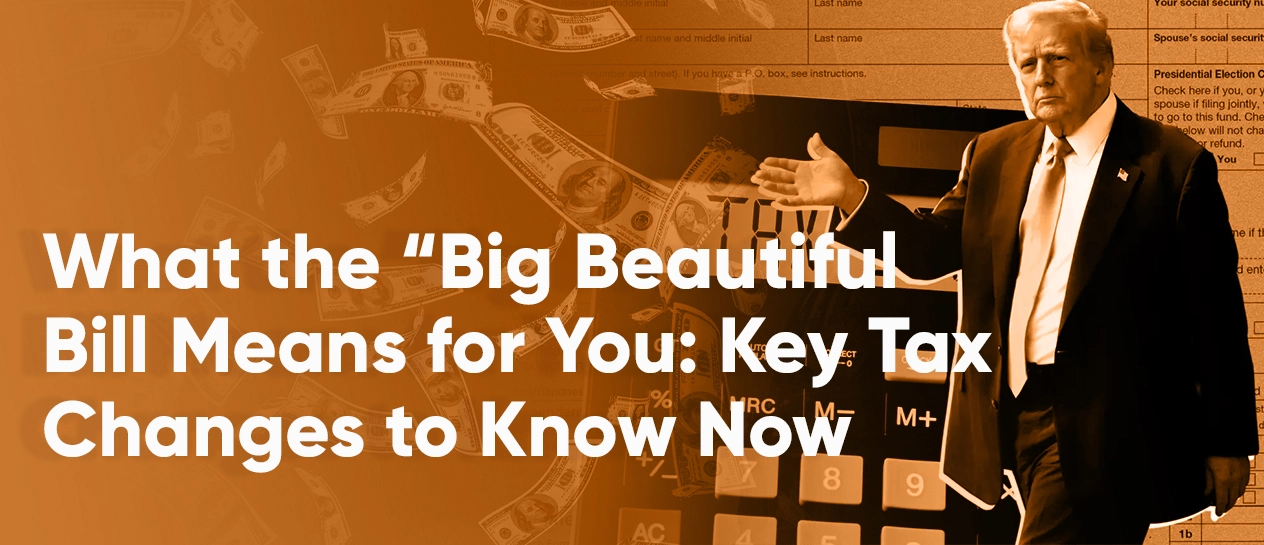President Biden signed the American Rescue Plan Act (“ARPA”) of 2021 on March 11, 2021, a massive $1.9 trillion stimulus package intended to address the extraordinary impact of the coronavirus pandemic. Important highlights are mentioned below:
HIGHLIGHTS:
- Stimulus payments and additional supplemental unemployment benefits to individual taxpayers
- Aid to states and municipalities, hospitals, and schools
- Additional funding for the Emergency Injury Disaster Loan (EIDL) Program and the Paycheck Protection Program (PPP)
- Vaccination, testing funding and health insurance subsidies
- Aid to airlines / airports, restaurants and venue operators
- Nutritional assistance and housing or rental aid
BUSINESS PROVISIONS : There are limited number of business tax provisions introduced in ARPA:
i) Employee Retention Credit (ERC)– The ARPA extends the ERC through December 31, 2021 and allows businesses to claim an ERC payroll tax credit of up to $7,000 per employee per quarter or $28,000 per employee for the entire year. Doubling the benefit of the already favorable 2021 ERC rules.
Business must experience either partially or fully suspended operations due to restrictions imposed by the government or a significant decline in gross receipts to qualify for the ERC. A “significant decline” in gross receipt occurs if an employer’s gross receipts for a given 2020 quarter are less than 50% of its gross receipts for the same calendar quarter in 2019. An eligible 2021 quarter requires a decline in gross receipts of more than 20% as compared to the same applicable quarter in 2019.
ii) Recovery Start-up business– The ARPA introduced a new tax provision for “recovery start-up businesses” (“RSBs”) that began carrying on a trade or business after February 15, 2020. An RSB meets the ERC eligibility test even if it does not meet the ERC requirement of either suspended operations or a significant decline in gross receipts. The ERC is limited to $50,000 per quarter for RSBs.
iii) Relief for Restaurants and Similar Places of Business– The ARPA introduces substantial financial relief for restaurants and similar places of business in the form of “restaurant revitalization grants.” Gross income does not include amounts received as restaurant revitalization grants.
iv) Paid Sick and Family Leave Credit– The paid sick and paid family leave credits for employers under the Families First Coronavirus Response Act are extended to the period April 1-September 30, 2021. It also increases the amount of wages for which an employer may claim the family leave credit from $10,000 to $12,000 per employee per year.
Any amount so excluded from income under this provision is treated as tax-exempt income in the case of a partnership or S corporation. That allows the amounts excluded to increase the basis of partners or S corporation shareholders in their partnership/S corporation interests. No deduction is denied or no tax attribute is reduced and no basis increase is denied by reason of this exclusion from gross income.
v) Treatment of Targeted EIDL – Gross income does not include amounts received as a targeted emergency economic injury disaster loan advance. As in the case of restaurant revitalization grants, any amount excluded from income under this provision is treated as tax-exempt income in the case of a partnership or S corporation. That allows the amounts excluded to increase the basis of partners or S corporation shareholders in their partnership or S corporation interests.
No deduction is denied, no tax attribute is reduced and no basis increase is denied by reason of this exclusion from gross income.
INDIVIDUAL PROVISIONS
i) Individual Recovery Rebates– The ARPA provides refundable credits for eligible individuals of up to $1,400 for single filers (and up to $2,800 for joint filers), plus $1,400 for child and non-child dependents.
Rebates are subject to phase-out thresholds beginning at $75,000 of adjusted gross income (“AGI”) for single filers / $112,500 for heads of household / $150,000 for joint filers. Rebates are not available for single filers with AGI over $80,000, heads of household with AGI over $120,000 and joint filers with AGI over $160,000.
An eligible individual must have a valid social security number and must not be a nonresident alien, an estate or trust, or an individual who is claimed as a dependent of another eligible individual. The rebate is not subject to reduction or offset by any other federal tax liability.
ii) Unemployment Benefits– Weekly supplemental unemployment benefits of $300 are generally extended through September 6, 2021. For any taxable year beginning in 2020, the first $10,200 of unemployment compensation (in the case of a joint return, up to $10,200 received by each spouse) is tax-free for taxpayers with AGI of less than $150,000. Returns filed with unemployment benefits prior to the $10,200 exclusion should not be amended per IRS guideline. The IRS has indicated it will refigure taxes on these returns and adjust the taxpayer’s account accordingly. The IRS will then send any refund amount directly to the taxpayer.
iii) Dependent Care Tax Credit– This credit is made refundable and is potentially worth up to $4,000 for one qualifying individual and $8,000 for two or more, subject to reduction based on a taxpayer’s AGI for 2021. The maximum credit is available to households with AGI of up to $125,000 (instead of $15,000 under pre-ARPA law).
The ARPA also increases the exclusion from income for employer-provided dependent care assistance from $5,000 to $10,500 (from $2,500 to $5,250 in the case of a separate return filed by a married individual) for 2021.
iv) Child Tax Credit– This credit is fully refundable if the credit exceeds taxes owed for 2021. It is increased to $3600 for children under six years old and to $3,000 for children six to seventeen, subject to phase-out. The full credit is available to married couples filing jointly (or a surviving spouse) with modified AGI of up to $150,000 ($112,500 in the case of heads of household and $75,000 in any other case).
The ARPA provides for an advance payment of approximately 50% of the credit, to be paid to the taxpayer in equal installments during 2021, with the remainder claimed on the 2021 tax return.
v) Earned Income Tax Credit (“EITC”)– The ARPA expands the eligibility and amount of the EITC for taxpayers with no qualifying children (“childless EITC”) for 2021. The maximum age to claim the childless EITC is reduced from 25 to 19 (except for certain full-time students and homeless/former foster youth), and the upper age limit for the childless EITC is eliminated.
The ARPA also allows a married but separated individual to be treated as not married for purposes of the EITC if a joint return is not filed. In these instances, as a general rule, the EITC may be claimed by an individual on a separate return so long as the qualifying child lives with the taxpayer for more than six months of the year and the taxpayer
- does not have the same principal place of abode as the taxpayer’s spouse for the last six months of the year or
- has a separation instrument and is not a member of the same household with the spouse by the end of the year.
The ARPA also increases the limitation on disqualified investments for purposes of claiming the EITC from $3,650 to greater than $10,000. Taxpayers may compute the EITC by substituting their 2019 earned income for their 2021 earned income if the 2021 earned income is less than the 2019 amount.
vi) Student Loan Forgiveness– Gross income does not include any amount which would be includible in gross income by reason of the discharge of indebtedness of eligible student loans in 2021-2025. The exclusion from income does not apply if the discharge of a loan made by certain lenders is on account of services performed for the lender.
vii) Extension of Limitation on Excess Business Losses for Non-Corporate Taxpayers– The Tax Cuts and Jobs Act of 2017 (“TCJA”) contained a provision that limited the deductibility of current-year business losses for pass-through businesses and sole proprietorships. The limitation was $500,000 on a joint tax return and $250,000 for all other filers. A business loss in excess of these amounts was disallowed in the year in which it was incurred and was converted into net operating losses that could be utilized in a future tax year. The CARES Act suspended the implementation of this section until tax years beginning after December 31, 2020.
Under the TCJA, this provision did not apply to tax years beginning after December 31, 2025. The ARPA extends the application of this section one year, to include tax years beginning before January 1, 2027.



